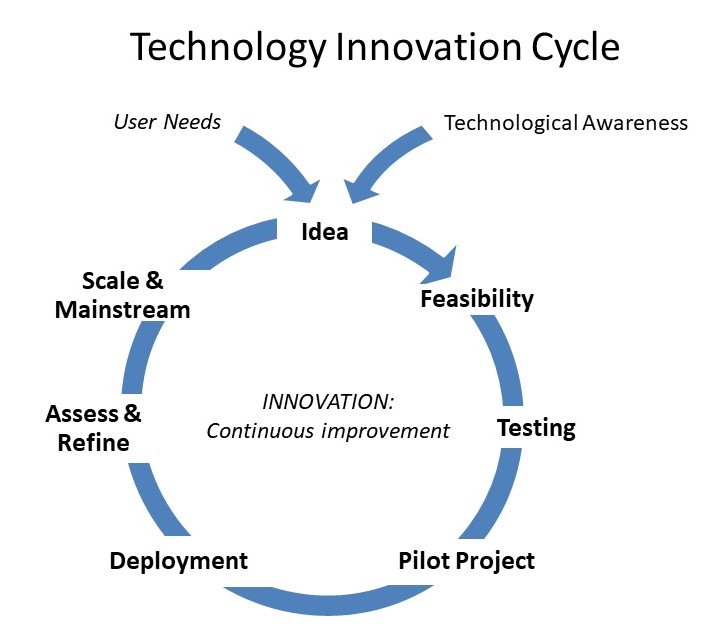A Technology Innovation Model for the United Nations:
The “TechNovation Cycle”
A. Walter Dorn, UN Technology Innovation Expert & Consultant
The paper was originally published by the United Nations as Unite Paper 2021(1).
It is made available here as a pdf, with the Abstract reproduced below.
Abstract
The United Nations is exploring technological innovation as it seeks to implement the principles and commitments in the Secretary-General's 2018 Strategy on New Technologies. To help conceptualize and guide innovation projects, this Unite Paper offers a model, called the “Technology Innovation Cycle” or “TechNovation Cycle,” to conceptualize, standardize and improve the process, including technology innovation for field operations. Using a simple diagram and well-proven stages, it describes the natural process from initial concept to full implementation, through the following stages: idea, feasibility study, testing, pilot project, deployment, assessment and refinement, scaling and mainstreaming. But for any model or innovation to take root, the United Nations must accept that some exploratory projects may not reach the implementation stage, though the lessons of failure are extremely valuable and important in a learning culture. The paper looks at key innovation paradigms, such as the “Technology, Process, and People” triad, and applies key concepts such as use cases, proof of concept, prototyping, and minimum viable product. It suggests mainstreaming by adding successfully demonstrated innovations to a UN service catalogue or other portfolio. Practical insights into each innovation stage are offered, drawing upon the best practices of governments and industries. This innovation model can be aligned with existing UN project management frameworks and may help make them more effective and efficient. The challenges of introducing “disruptive” new technologies are also addressed, along with some general solutions.


